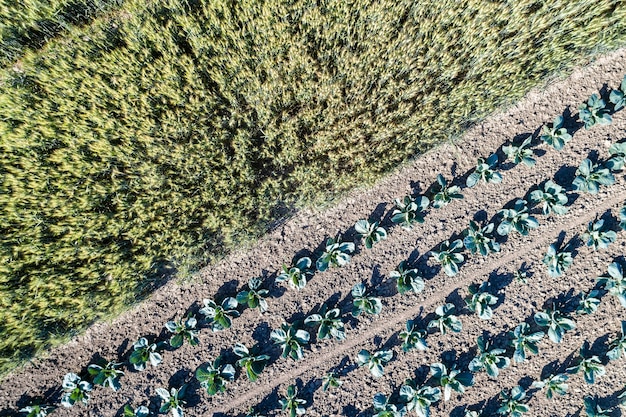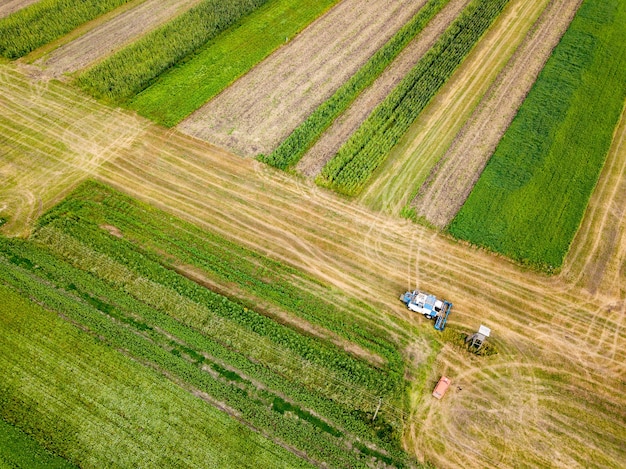Hi there, I’m Mike , a small-scale farmer. Over the years, I’ve tried everything to keep my soil healthy and crops thriving. Crop rotation is one practice that’s truly transformed how I grow food. It’s a simple, time-tested method, but the benefits of crop rotation are incredible, and I’d love to share my experience with you.
Whether a backyard gardener or managing a larger farm, crop rotation can make a huge difference to your yields and soil health. Let me explain why it’s worth considering, how it works, and the practical steps to get started.
What Is Crop Rotation?

If you’re new to the idea, crop rotation means growing different types of plants in a planned sequence on the same piece of land. Instead of planting the same crop year after year, you switch things up. For example, you might grow tomatoes one year, beans the next, and leafy greens the year after.
Why does this matter? Because plants use and return different nutrients to the soil. Rotating crops helps maintain a natural balance in your soil while reducing the risk of pests and diseases.
Why I Switched to Crop Rotation
A few years ago, I noticed my tomato plants weren’t as healthy as they used to be. The leaves were yellowing, and the fruit didn’t look quite right. After some research, I realized I’d been planting tomatoes in the same spot for too many years. The soil was tired, and pests had figured out where to find their favorite food.
That’s when I decided to try crop rotation, and honestly, I haven’t looked back. Not only did it solve my tomato problem, but it also brought so many other unexpected benefits.
The Benefits of Crop Rotation
1. Healthier Soil
One of the most noticeable benefits of crop rotation is how much healthier the soil becomes. Each plant has different nutrient needs, and rotating crops prevents the soil from being depleted of the same nutrients year after year.
For instance, legumes like beans and peas actually add nitrogen back into the soil. Planting them after heavy feeders like corn or pumpkins gives the soil a chance to replenish naturally.
2. Fewer Pests and Diseases
When you grow the same crop in the same spot, pests and diseases specific to that plant tend to build up in the soil. Changing your crops makes it harder for these problems to take hold.
For example, I used to struggle with root-knot nematodes in my carrots. After rotating with onions, which these pests don’t like, the problem almost disappeared.
3. Improved Yields
It’s not just the soil that benefits—your crops will thrive, too. Healthier soil and fewer pests mean stronger, more productive plants. I’ve seen noticeable improvements in the size and quality of my vegetables since starting crop rotation.
4. Better Weed Control
Certain crops, like pumpkins and zucchini, have broad leaves that shade the ground and suppress weeds. Including these in your rotation can help keep weeds in check without relying too much on manual labor or herbicides.
How to Start Crop Rotation
Getting started is easier than you might think. Here’s how I plan my rotations:
1. Divide Your Garden into Sections
Split your growing area into at least three or four sections. This will make it easier to rotate crops in an organized way.
2. Group Crops by Type
Crops can be grouped into families based on their nutrient needs and pest issues. Here’s a simple example:
- Leafy Greens: Lettuce, spinach, kale
- Fruiting Plants: Tomatoes, cucumbers, capsicums
- Roots: Carrots, radishes, potatoes
- Legumes: Beans, peas
3. Plan a Rotation Schedule
Rotate your crop groups every season. For example:
- Year 1: Plant leafy greens in section A, fruiting plants in section B, roots in section C, and legumes in section D.
- Year 2: Move each group to the next section.
4. Track Your Rotations
Keep a garden journal or a simple chart to remember what you planted where. This helps you avoid repeating crops in the same spot too soon.
My Tips for Success
- Start Small: If a full rotation feels overwhelming, start with just two or three crops and expand as you get comfortable.
- Use Cover Crops: In between growing seasons, plant cover crops like clover or rye to protect and nourish the soil.
- Test Your Soil: Test your soil every couple of years to check its nutrient levels. This can guide your rotation choices.
- Keep Learning: Farming and gardening are all about trial and error. Don’t be afraid to experiment and adjust your plans based on what works for your soil and climate.
Common Questions About Crop Rotation

Does crop rotation work in small gardens?
Absolutely! Even in a small space, you can rotate crops using containers or dividing your garden into a few sections.
How often should I rotate my crops?
A good rule of thumb is to avoid planting the same crop or its close relatives in the same spot for at least two to three years.
Can I grow flowers and herbs alongside my vegetables?
Yes, and they can complement your crop rotation. Flowers like marigolds deter pests, while herbs like basil and dill attract pollinators.
Final Thoughts
Crop rotation isn’t just for large-scale farms. It’s a practical, sustainable way to grow healthier plants and improve your soil, no matter the size of your garden. Since I started rotating my crops, I’ve noticed better harvests and a deeper connection to the land. It’s a simple practice with far-reaching benefits that any grower can embrace.
If you’ve been wondering whether crop rotation is worth the effort, I can confidently say it’s one of the best decisions I’ve made for my garden. Why not give it a go and see the difference for yourself?
Let me know how it works for you—comment below or share your own tips and experiences. Happy growing!
